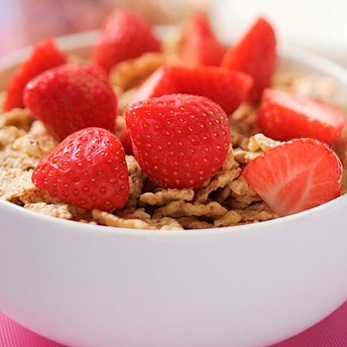|
|
||||||||||||||||||||||||
|
||||||||||||||||||||||||
|
Privacy Policy | Editorial Policy | Profit Policy | Join the Association | List of Members | Contact us | Index | Links |
||||||||||||||||||||||||
|
Back Go to page: 1 2 3 4 5 6 7 8 9 10 11 12 13 14 15 16 17 18 19 20 Forward
|
||||||||||||||||||||||||
|
Health and Life Style. |
||||||||||||||||||||||||
|
Which spread is better for my heart
— butter or margarine?
People become confused when faced with the choice of whether to purchase butter or margarine. Butter gets points for taste; margarine for being easy to spread. Butter is high in saturated fats and when consumed in excess amounts can increase LDL (BAD) cholesterol levels, thus increasing the risk of cardiovascular disease.
Margarine usually tops butter when it comes to heart health. Margarine is made from vegetable oils, so it contains unsaturated "good" fats — polyunsaturated and monounsaturated fats. When substituted for saturated fats, these types of fats help reduce low-density lipoprotein (LDL), or "bad," cholesterol fats which help to increase HDL (GOOD) cholesterol and potentially reduce the risk of cardiovascular disease.
Butter, on the other hand, is made from animal fat, which is why it contains more saturated fat. Butter contains about 50% saturated fat, while margarine has a maximum of 20% saturated fat. The fat content of "light" or fat-reduced margarine is lowered by replacing some fat with protein and water, meaning many are much lower than 20%.
But not all margarines are created equal, some margarines contain trans fat. In general, the more solid the margarine, the more trans fat it contains. Trans fat, like saturated fat, increases blood cholesterol levels and the risk of heart disease and also lowers high-density lipoprotein (HDL), or "good," cholesterol levels. In the supermarket, look for a spread that doesn't have trans fats and has the least amount of saturated fat. When comparing spreads, be sure to read the Nutrition Facts panel and check the grams of saturated fat and trans fat.
To call a spread margarine, the product must be a spreadable food made of edible oils and water, containing at least 80 grams of edible oils per 100 grams. It may also include water, edible proteins, salt, lactic acid-producing microorganisms, flavour-producing microorganisms and milk products.
For a product to be called butter, it must be derived exclusively from milk and ingredients that are obtained from milk, including at least 80% milk fat. It may also contain water, salt, lactic acid producing microorganisms and flavour-producing microorganisms. When you see products in the supermarket that are packaged up like butter, or use words such as "butter-flavoured" without specifically stating the product is butter, it's likely they have been altered in such a way that it no longer meets the content requirements above.
If you choose a full-fat spread (best for cooking), aim for less than 27 grams of saturated fat and one gram of trans fat per 100 grams. For fat-reduced spreads (best for bread and toast), aim for less than six grams of saturates and 0.2 grams of trans fat per 100 grams.
Some margarines contain added plant sterols and stanols, a type of fat found in vegetable oil, nuts, legumes, grains, cereals, wood pulp and leaves, which are able to reduce cholesterol absorption from the small intestine into the bloodstream. If you have high blood cholesterol, you may want to use such a product, though you need to consume 20 to 25 grams per day for the maximum effect. As soon as the edible oil content of margarine drops below 80 grams per 100 grams, it cannot technically be called "margarine". This is why the word "margarine" does not appear on labels for spreads that are fat-reduced – they are called “spreads”. These are the healthiest options if you are trying to reduce your total fat and kilojoule intake.
If you are trying to lower your salt intake, check the sodium column on the nutrition information panel and aim for less than 400 milligrams per 100grams.
Although the debate rages about the potency of specific fats in raising blood cholesterol, most Australians consume too much saturated fat from animal products. Saturated fat from foods and drinks gets manufactured in your body into low-density-lipoprotein (LDL) cholesterol, or commonly referred to as "bad" cholesterol, which then appears in your blood. Excess LDL cholesterol that cannot be cleared by the liver ends up lining your artery walls. This makes your blood vessels hard and inflexible and they gradually become blocked. From there, it is just a matter of time before the blockage triggers a heart attack or stroke.
Saturated fat is a solid at room temperature and is the predominate fat found in the white fat in meat and dairy products, including milk, cheese, cream and butter.
What to look for: Choose margarines that are low in saturated fats and high in polyunsaturated and monounsaturated fats.
What to avoid: Avoid trans fats – always look for margarines with the lowest levels of trans fats. Trans fats are ‘bad fats’ that raise LDL cholesterol levels in the blood. They can be created during the manufacturing of some table margarines. Check the labels of all margarines you buy, to make sure they contain less than 1% trans fat.
Plant Sterols: Plant sterols have been shown to lower cholesterol by 10%, through a mechanism in which they block the body's ability to absorb cholesterol. In order to maximise the benefit obtained from plant sterols, 2-3g should be consumed daily. This corresponds to 1-1½ tablespoons of plant based sterol margarine. Consuming more than this amount will confer no additional benefit with regard to an effect on lowering cholesterol. So too, if less than this amount is consumed, no benefit will result.
For best results, plants sterols should be consumed in conjunction with a healthy diet that is balanced with physical activity.
Do illiterate people get the full effect of alphabet soup?
Does grass-fed beef have any heart-health benefits that other types of beef don't?
The way cows are fed can
have a major effect on the nutrient composition of the beef. Whereas
cattle today are often fed grains, the animals we ate throughout
evolution roamed
The difference between grass-fed and grain-fed cows.
Most cows start out living similar lives. The calves are born in the spring, drink milk from their mothers and are then allowed to roam free and eat grass, shrubs or whatever edible plants they find in their environment. This continues for about 6 to 12 months. After that, the “conventionally” raised cows are moved to feedlots.
There, the cows are rapidly fattened up with grain-based feeds, usually made with a base of soy or corn. The conventionally raised cows are often given drugs and hormones to grow faster, as well as antibiotics to survive the unsanitary living conditions. The cows live there for a few months and are then moved into the factory for slaughtering. Compare that to grass-fed cows, which may continue to live on grassland for the remainder of their lives. Of course, this isn’t really that simple and the different feeding practices are complicated and varied. The term “grass-fed” isn’t even clearly defined but generally speaking, grass-fed cows eat (mostly) grass, while grain-fed cows eat (mostly) an unnatural diet based on corn and soy during the latter part of their lives.
Grass-fed beef may have some heart-health benefits that other types of beef don't have. When compared with other types of beef, grass-fed beef may have:
Lean beef that's 10 percent fat or less, whether it's grass-fed beef or another type of beef, can be part of a heart-healthy diet. Although many people think grass-fed beef tastes better, it's generally more expensive and there is limited long-term research to definitively prove that grass-fed beef is better for you.
What's the difference between sea salt and table salt?
The
most notable differences between sea salt and table salt are in the
taste, texture and
Table salt is typically mined from underground salt deposits. Table salt is more heavily processed to eliminate minerals and usually contains an additive to prevent clumping. Most table salt also has added iodine, an essential nutrient that helps maintain a healthy thyroid. Sea salt and table salt have the same basic nutritional value, despite the fact that sea salt is often promoted as being healthier. Sea salt and table salt contain comparable amounts of sodium by weight.
Whichever type of salt you enjoy, do so in moderation. It is recommended that you limit your intake of salt to less than 2,300 milligrams a day (about 1½ teaspoons) — or 1,500 milligrams (about ¾ teaspoon) if you're age 51 or older, or if you have high blood pressure, diabetes or chronic kidney disease.
So Moses is up on Mount Sinai and he says to God, "God, I have a pounding headache!" And God says, "Here, take these tablets." Sorry Rupe!
Heart-healthy diet: 8 steps to prevent heart disease.
Ready to start your heart-healthy diet? Here are eight tips to get you started.
Although you might know that eating certain foods can increase your heart disease risk, it's often tough to change your eating habits. Whether you have years of unhealthy eating under your belt or you simply want to fine-tune your diet, here are eight heart-healthy diet tips. Once you know which foods to eat more of and which foods to limit, you'll be on your way toward a heart-healthy diet.
1. Control your portion size. How much you eat is just as important as what you eat. Overloading your plate, taking seconds and eating until you feel stuffed can lead to eating more calories than you should. Portions served in restaurants are often more than anyone needs. Use a small plate or bowl to help control your portions. Eat larger portions of low-calorie, nutrient-rich foods, such as fruits and vegetables, and smaller portions of high-calorie, high-sodium foods, such as refined, processed or fast foods. This strategy can shape up your diet as well as your heart and waistline.
Keep track of the number of servings you eat. A serving size is a specific amount of food, defined by common measurements such as cups, ounces or pieces. For example, one serving of pasta is 1/2 cup, or about the size of a hockey puck. A serving of meat, fish or chicken is about 60 to 85 grams, or about the size and thickness of a deck of cards. Judging serving size is a learned skill. You may need to use measuring cups and spoons or a scale until you're comfortable with your judgment.
2.
Eat more vegetables and fruits. Vegetables and fruits are good sources of vitamins and minerals. Vegetables and fruits are also low in calories and rich in dietary fibre. Vegetables and fruits contain substances found in plants that may help prevent cardiovascular disease. Eating more fruits and vegetables may help you eat less high-fat foods, such as meat, cheese and snack foods. Featuring vegetables and fruits in your diet can be easy. Keep vegetables washed and cut in your refrigerator for quick snacks. Keep fruit in a bowl in your kitchen so that you'll remember to eat it. Choose recipes that have vegetables or fruits as the main ingredients, such as vegetable stir-fry or fresh fruit mixed into salads.
|
||||||||||||||||||||||||
|
||||||||||||||||||||||||
|
3. Select whole grains. Whole grains are good sources of fibre and other nutrients that play a role in regulating blood pressure and heart health. You can increase the amount of whole grains in a heart-healthy diet by making simple substitutions for refined grain products. Or be adventuresome and try a new whole grain, such as whole-grain farro, quinoa or barley.
|
||||||||||||||||||||||||
4. Limit unhealthy fats. Limiting how much saturated and trans fats you eat is an important step to reduce your blood cholesterol and lower your risk of coronary artery disease. A high blood cholesterol level can lead to a build-up of plaques in your arteries, called atherosclerosis, which can increase your risk of heart attack and stroke.
The American Heart Association offers these guidelines for how much fat to include in a heart-healthy diet:
|
||||||||||||||||||||||||
|
||||||||||||||||||||||||
|
The
best way to reduce saturated and trans fats in your diet is to limit
the amount of solid fats, butter, margarine and shortening, you add
to food when cooking and serving. You can also reduce the amount of
saturated fat in your diet by trimming fat off your meat or choosing
lean meats with less than 10 percent fat. You can also use low-fat
substitutions when possible for a heart-healthy diet. For example,
top your baked potato with low-sodium
You may also want to check the food labels of some cookies, biscuits and chips. Many of these snacks, even those labelled "reduced fat", may be made with oils containing trans fats. One clue that a food has some trans fat in it is the phrase "partially hydrogenated" in the ingredient list. When you do use fats, choose monounsaturated fats, such as olive oil or canola oil. Polyunsaturated fats, found in certain fish, avocados, nuts and seeds, also are good choices for a heart-healthy diet. When used in place of saturated fat, monounsaturated and polyunsaturated fats may help lower your total blood cholesterol. But moderation is essential. All types of fat are high in calories.
An easy way to add healthy fat (and fibre) to your diet is ground flaxseed. Flaxseeds are small brown seeds that are high in fibre and omega-3 fatty acids. Studies have found that flaxseeds may help lower cholesterol in some people. You can grind the seeds in a coffee grinder or food processor and stir a teaspoon of them into yogurt, applesauce or hot cereal.
|
||||||||||||||||||||||||
5. Choose low-fat protein sources. Lean
meat, poultry and fish, low-fat dairy products, and eggs are some of
your best sources of protein. But be careful to choose lower fat
options, such as skim milk rather than whole
Legumes, beans, peas and lentils, also are good sources of protein and contain less fat and no cholesterol, making them good substitutes for meat. Substituting plant protein for animal protein, for example, a soy or bean burger for a hamburger, will reduce your fat and cholesterol intake.
|
||||||||||||||||||||||||
6. Reduce the sodium in your food. Eating a lot of sodium can contribute to high blood pressure, a risk factor for cardiovascular disease. Reducing sodium is an important part of a heart-healthy diet. The Department of Health and Human Services recommends:
Although reducing the amount of salt you add to food at the table or while cooking is a good first step, much of the salt you eat comes from canned or processed foods, such as soups and frozen dinners. Eating fresh foods and making your own soups and stews can reduce the amount of salt you eat.
If you like the convenience of canned soups and prepared meals, look for ones with reduced salt. Be wary of foods that claim to be lower in sodium because they are seasoned with sea salt instead of regular table salt — sea salt has the same nutritional value as regular salt.
Another way to reduce the amount of salt you eat is to choose your condiments carefully. Many condiments are available in reduced-sodium versions and salt substitutes can add flavour to your food with less sodium.
|
||||||||||||||||||||||||
7. Plan ahead: Create daily menus. You know what foods to feature in your heart-healthy diet and which ones to limit. Now it's time to put your plans into action. Create daily menus using the six strategies listed above. When selecting foods for each meal and snack, emphasize vegetables, fruits and whole grains. Choose lean protein sources and healthy fats, and limit salty foods. Watch your portion sizes and add variety to your menu choices.
8. Allow yourself an occasional treat. Allow yourself an indulgence every now and then. A candy bar or handful of potato chips won't derail your heart-healthy diet. But don't let it turn into an excuse for giving up on your healthy-eating plan. If overindulgence is the exception, rather than the rule, you'll balance things out over the long term. What's important is that you eat healthy foods most of the time.
Incorporate these eight tips into your life, and you'll find that heart-healthy eating is both doable and enjoyable. With planning and a few simple substitutions, you can eat with your heart in mind.
Food energy density: Feel full on fewer calories.
Who doesn't want to fill up on fewer calories? Find out how eating the right foods can help you do just that!
Energy density is just another way to say caloric density — after all calories provide energy. In a nutshell:
Eat more low-density foods. How full you feel is determined by the volume and weight of food, not by the number of calories you consume. If you choose foods with low energy density, few calories for their bulk, you can eat more volume but consume fewer calories because of two key factors:
Use these visual comparisons to help guide your selections.
Breakfast. For about 300 calories, you could have...
Lunch. For about 275 calories, you could have...
Dinner. For about 600 calories, you could have...
Snack. For about 150 calories, you could have...
As you can see, you can eat fewer calories yet feel more satisfied by choosing foods that are low in energy density, in other words, you can have more food. Try reducing the fat and increasing the amount of fibre-rich foods, such as fruits and vegetables, in your favourite dishes.
|
||||||||||||||||||||||||
|
Are you a current or former Defence member who resided in Canberra in the 1970s or 1980s?
On 1
July 2015 the ACT Government Asbestos Response Taskforce released a
register of residential addresses in the ACT affected by loose-fill
asbestos insulation (also known as Mr Fluffy insulation).
If you resided in Canberra in the 1970s and/or 1980s and suspect that you may have been exposed to asbestos as a result of your employment and housing with Defence call 1800 DEFENCE (1800 333 362) and ask to be put through to the Defence Asbestos Exposure Evaluation Scheme (DAEES), or click HERE.
For more information regarding the ACT Government Asbestos Response Taskforce click HERE.
A list of affected houses is available on the ACT Taskforce's website HERE.
There’s more info HERE
|
||||||||||||||||||||||||
|
|
||||||||||||||||||||||||
|
Coordinated Veterans’ Care.
The Coordinated Veterans’ Care (CVC) Program is a team-based program designed to increase support for Gold Card holders with one or more targeted chronic conditions or complex care needs and those who are at risk of unplanned hospitalisation. CVC focuses on improving the management of chronic conditions and quality of life for eligible Gold Card holders who are most at risk of unplanned hospitalisation. Gold Card holders can include veterans, war widow/widowers and dependants. The programme is aimed at Gold Card holders with the following chronic conditions:
· congestive heart failure · coronary artery disease · pneumonia · chronic obstructive pulmonary disease · diabetes.
GPs are paid to enrol Gold Card holders onto the CVC Program and to provide ongoing, comprehensive and coordinated care with the assistance of their practice nurse or a community nurse (from a DVA contracted provider).
If you are DVA Card Holder, speak to your GP today to see if you can be enrolled in the CVC Program.
Good Advice.
It is more important to live longer than to have more wealth.
· In a ‘high end’ hand phone, 70% of the functions are useless. · In an expensive car, 70% of the speed is not needed. · In a luxurious villa, 70% of the space remains un-occupied or un-utilized. · In a whole wardrobe of clothes, 70% of them are seldom worn. · Out of whole life’s earnings, 70% stays behind for other people to use. · 70% of talent is not utilized.
So, how to make full use of our 30%?
· Go for a medical checkup even when you feel fit. · Drink more water even if you’re not thirsty. · Let go your ego, whenever you can. · Give in even if you are ‘right’. · Be humble even if you are very powerful. · Be contented even if you are not rich. Have a very good Life!!!
|
||||||||||||||||||||||||
|
|
||||||||||||||||||||||||
|
|
||||||||||||||||||||||||
|
|
||||||||||||||||||||||||
|
|
||||||||||||||||||||||||
|
|
||||||||||||||||||||||||
|
|
||||||||||||||||||||||||
|
|
||||||||||||||||||||||||
|
Back Go to page: 1 2 3 4 5 6 7 8 9 10 11 12 13 14 15 16 17 18 19 20 Forward |
||||||||||||||||||||||||
|
|


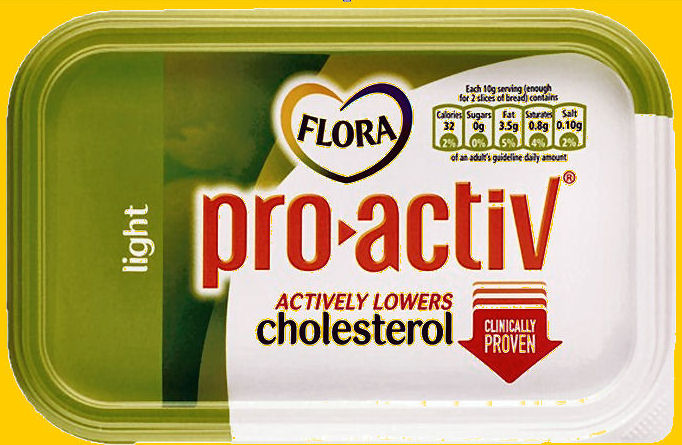
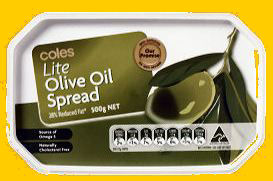
 free and ate grass. Many studies have shown that the nutrients in
beef can vary depending on what the cows eat. It’s not only
important what we eat. It also matters what the foods that we eat,
ate.
free and ate grass. Many studies have shown that the nutrients in
beef can vary depending on what the cows eat. It’s not only
important what we eat. It also matters what the foods that we eat,
ate.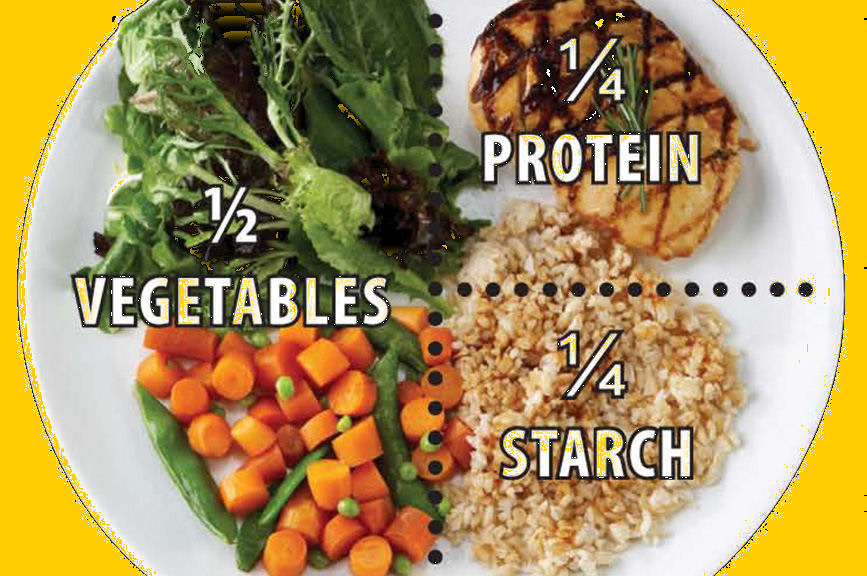
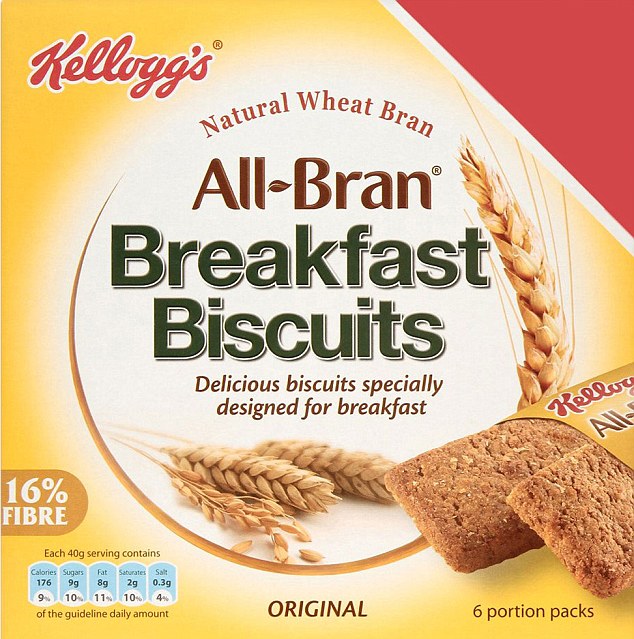 salsa or low-fat yogurt rather than butter, or use sliced whole
fruit or low-sugar fruit spread on your toast instead of margarine.
salsa or low-fat yogurt rather than butter, or use sliced whole
fruit or low-sugar fruit spread on your toast instead of margarine. milk and skinless chicken breasts rather than fried chicken patties.
Fish is another good alternative to high-fat meats. And certain
types of fish are rich in omega-3 fatty acids, which can lower blood
fats called triglycerides. You'll find the highest amounts of
omega-3 fatty acids in cold-water fish, such as salmon, mackerel and
herring. Other sources are flaxseed, walnuts, soybeans and canola
oil.
milk and skinless chicken breasts rather than fried chicken patties.
Fish is another good alternative to high-fat meats. And certain
types of fish are rich in omega-3 fatty acids, which can lower blood
fats called triglycerides. You'll find the highest amounts of
omega-3 fatty acids in cold-water fish, such as salmon, mackerel and
herring. Other sources are flaxseed, walnuts, soybeans and canola
oil.